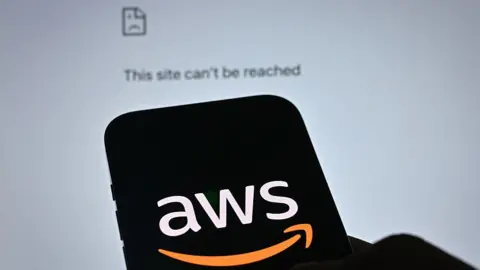Amazon Cloud Outage 2025: How a 7-Hour Disruption Shook Global Infrastructure

Amazon Cloud Outage 2025: How a 7-Hour Disruption Shook Global Infrastructure
When Amazon Web Services (AWS) went dark for seven hours this week, the ripple effects were felt across the world. From e-commerce to entertainment, healthcare systems to government portals — almost everything that depends on the cloud stumbled.
This wasn’t just another tech hiccup; it was a harsh reminder of how deeply modern life relies on a single company’s infrastructure.
What Happened
The outage began early Tuesday morning (UTC) and primarily affected AWS’s US-East-1 region — the company’s most heavily used data zone.
Within minutes, reports flooded social media: banking apps froze, streaming services timed out, and logistics dashboards stopped syncing.
Amazon cited a core network connectivity issue inside one of its data centers that triggered cascading failures across its global backbone.
Engineers managed to restore 70% of services within four hours, but some workloads — particularly those running on older S3 and EC2 instances — took nearly seven hours to come back online.
The Immediate Impact
AWS hosts nearly one-third of the world’s public cloud workloads. When it sneezes, the internet catches a cold.
- E-commerce: Major retailers reported payment failures and cart errors.
- Finance: Trading dashboards and fintech APIs went offline, halting millions in real-time transactions.
- Healthcare: Telemedicine portals and hospital cloud records faced downtime during patient intake.
- Government services: Several municipal portals went inaccessible during the outage window.
Even Amazon’s own services — Prime Video, Alexa, and Ring — experienced intermittent failures.
A Dependence Problem
Experts warn this is more than a one-off disruption.
“The problem isn’t just downtime — it’s concentration,” says Martin Krause, CTO at CloudRisk Analytics.
“We’ve built the digital economy on a few cloud monopolies. When one goes down, the world goes with it.”
AWS’s dominance means resilience planning is often overlooked. Many enterprises rely on multi-zone redundancy within AWS but fail to diversify across providers.
That’s like building multiple exits in one room — but forgetting to check if the door leads outside.
Technical Breakdown
Post-incident analysis revealed a failure in an internal network control plane component that routes traffic between compute clusters.
When automated failover kicked in, a configuration mismatch caused a recursive loop, flooding routers with malformed packets.
In simpler terms: AWS’s self-healing system made things worse before it made them better.
The same mechanism designed to protect uptime amplified the problem across the backbone.
This isn’t new. Similar issues triggered the infamous AWS outages in 2020, 2021, and 2023 — each one caused by internal automation errors that spiraled out of control.
Security Concerns Amid the Chaos
While there’s no evidence of a cyberattack, the outage opened a small but serious window for opportunistic attacks.
Threat intelligence platforms like Recorded Future flagged spikes in phishing campaigns and malware delivery during the downtime — attackers posing as AWS Support or DevOps tools urging admins to “verify credentials.”
It’s a classic move: strike when visibility is lowest and panic is highest.
The Business Fallout
According to estimates by IT analytics firm NetScope, global downtime losses from the AWS incident topped $1.6 billion in lost revenue and productivity.
Startups without backup plans bore the brunt, especially SaaS platforms hosted entirely in one AWS region.
Shareholders didn’t ignore it either — Amazon stock dipped 3% mid-week before recovering after the company’s incident response post went live.
Still, the damage to trust may linger longer than the technical downtime.
Lessons Learned
1. Multi-cloud is not optional.
Relying solely on AWS, Azure, or Google Cloud is a risk no enterprise should take anymore.
2. Disaster recovery needs modernization.
Most organizations still treat cloud resilience as a checklist, not a continuous exercise.
3. Monitor beyond uptime.
Performance monitoring is great — but security monitoring during outages is what keeps attackers from exploiting chaos.
AWS’s Response
In a follow-up statement, Amazon said it’s conducting a post-mortem analysis and will publish detailed root-cause findings under its AWS Health Dashboard.
The company pledged to enhance failover isolation and update internal routing logic to prevent future recursions.
Amazon also promised to improve communication channels after many customers complained of delays in receiving real-time status alerts.
Takeaway
Every major outage chips away at the illusion of infinite uptime.
We’ve traded local server control for global scalability — but at the cost of dependency.
As the cloud matures, resilience must evolve from a vendor feature to a boardroom strategy.
Because when the backbone of the internet wobbles, the entire digital world shakes.
🔗 Recommended Resources
- AWS Health Dashboard – https://health.aws.amazon.com
- Cloud Risk Institute – “The Single Point of Failure Problem”
- Recorded Future – Outage Threat Intelligence Report (Sept 2025)








